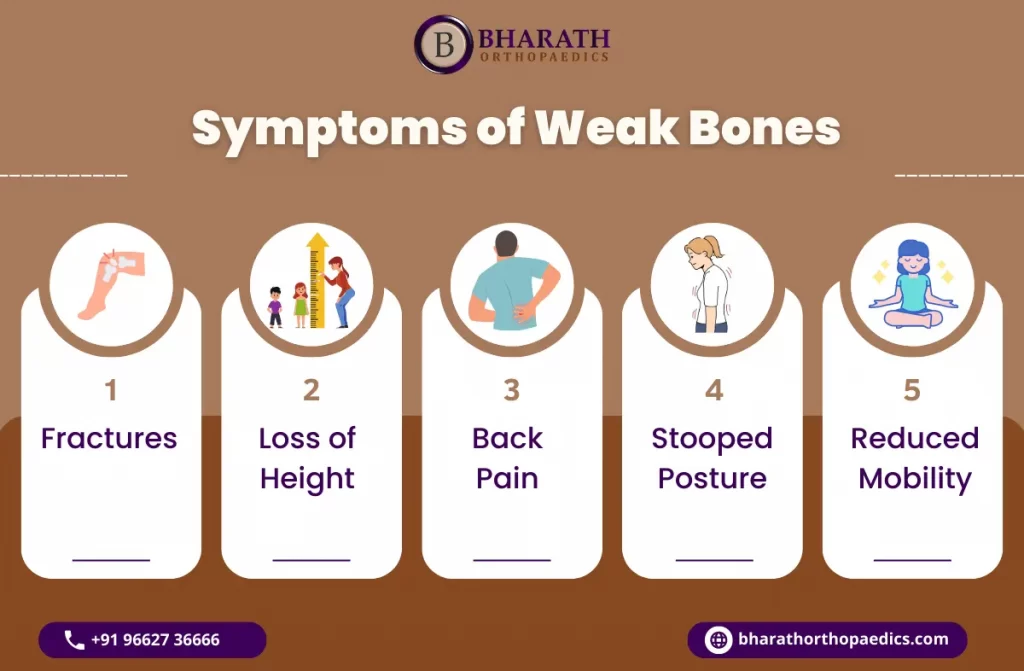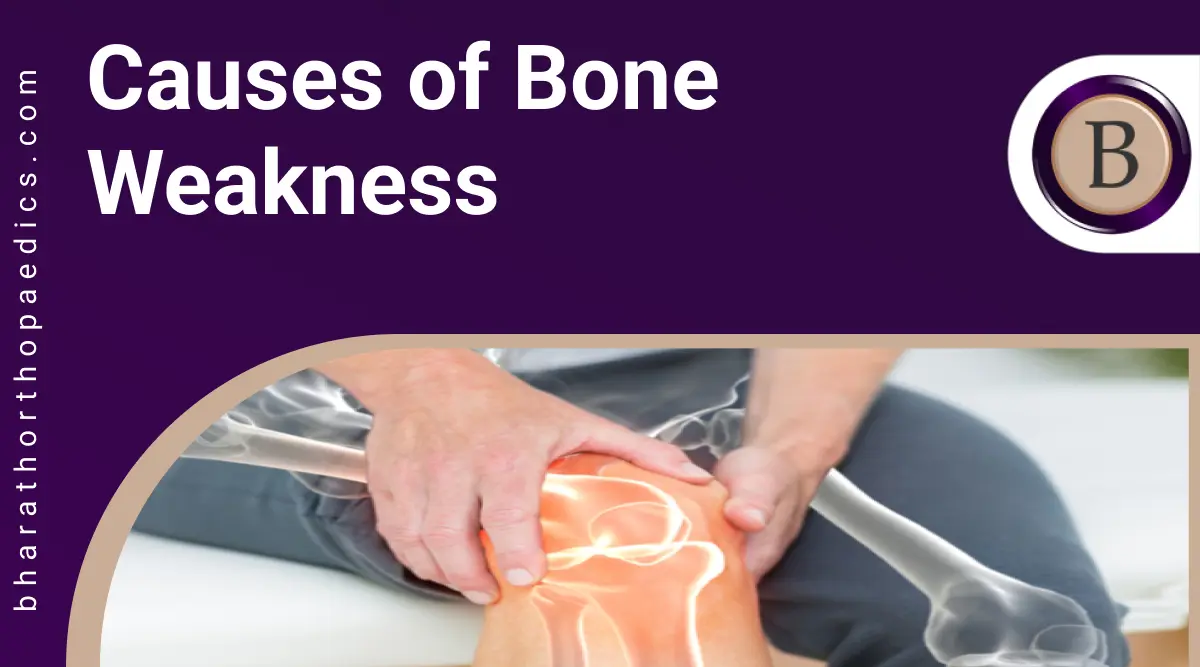Bone health is pivotal for overall well-being, often escaping notice until issues arise. The human skeletal system provides structural support, safeguards vital organs, and enables movement. However, instances occur when this crucial system becomes compromised due to various factors leading to causes of bone weakness.
Understanding Causes of Bone Weakness
Bone weakness, or osteopenia, can pave the way for grave conditions like osteoporosis if unaddressed. It’s essential to grasp the underlying causes to take preventive measures and maintain robust bones throughout life.
Nutritional Deficiency
A prime contributor to causes of bone weakness is a lack of vital nutrients like calcium, vitamin D, and vitamin K. These nutrients play a pivotal role in bone mineralization and overall health. A diet lacking in these nutrients substantially increases the risk of bone weakness.

Sedentary Lifestyle
Regular physical activity benefits not just muscles, but also bone health. Engaging in weight-bearing exercises and activities stressing bones stimulates growth and maintains density. A sedentary lifestyle, conversely, can lead to bone weakening over time, contributing to causes of bone weakness.
Hormonal Changes
Hormones crucially maintain bone density. Reduced estrogen levels during menopause in women and low testosterone in men are causes of bone weakness. These hormonal shifts affect the balance between bone formation and resorption, leading to diminished mass, which are causes of bone weakness.
Age-related Factors
With age, bones naturally lose density and become susceptible to fractures. This age-linked bone loss, primary osteoporosis, results from genetics and hormonal shifts, which are causes of bone weakness.
Medical Conditions
Certain ailments and treatments impact bone health. Conditions like celiac disease, inflammatory bowel disease, and hormonal disorders interfere with nutrient absorption, causing causes of bone weakness. Also, prolonged use of medications like corticosteroids contributes to bone loss, which are causes of bone weakness.
Genetic Predisposition
Genetic factors play a role in bone density and vulnerability to causes of bone weakness. A family osteoporosis history heightens the risk of bone issues, making genetic factors prominent causes of bone weakness.
Lifestyle Choices
Unhealthy habits, smoking, and excessive alcohol consumption, detrimentally affect bone health. Smoking hampers blood circulation to bones, and excessive alcohol impedes nutrient absorption, being detrimental causes of bone weakness.
Symptoms of Weak Bones and Muscles
Weak bones and muscles can manifest through a variety of symptoms, often indicating underlying health issues. Here are several typical symptoms of weak bones and muscles to keep in mind:
Weak Bones (Osteopenia/Osteoporosis)
- Fractures: Weak bones are more prone to fractures, even from minor falls or injuries. Fractures can occur in areas like the spine, wrist, hip, or ribs.
- Loss of Height: Compression fractures in the spine due to weakened bones can lead to a gradual loss of height over time.
- Back Pain: Spinal fractures can cause chronic back pain, which may worsen with movement or pressure on the affected area.
- Stooped Posture: Compression fractures in the spine can cause a forward curvature of the upper back, resulting in a stooped or hunched posture.
- Reduced Mobility: Weak bones can limit mobility and make it challenging to perform daily activities without discomfort or pain.
Weak Muscles
- Muscle Weakness: Noticeable reduction in muscle strength, making it difficult to perform tasks that were once manageable.
- Fatigue: Muscles that are weak may tire easily, leading to increased fatigue during physical activities.
- Difficulty Lifting Objects: Struggling to lift or carry even moderately heavy objects due to weakened muscle strength.
- Balance Issues: Weak muscles can lead to balance problems and an increased risk of falls.
- Poor Posture: Muscles play a crucial role in maintaining proper posture. Weak muscles can contribute to slouching or poor alignment.
- Decreased Endurance: Muscles provide the body with the ability to endure physical activity over time. Weak muscles can result in decreased endurance and stamina.
- Difficulty Climbing Stairs: Weak leg muscles can make it challenging to climb stairs or inclines.
- Tremors or Shaking: In some cases, weak muscles can lead to involuntary shaking or tremors, particularly during attempts to perform tasks that require strength.
Conclusion
Upholding sturdy bones is a lifelong endeavor, requiring proper nutrition, regular exercise, and mindful lifestyle choices due to the causes of bone weakness. Understanding these causes of bone weakness empowers individuals to take action proactively. By prioritizing balanced diets, physical activity, and informed lifestyle decisions, we ensure our bones remain resilient, ably supporting us throughout life despite causes of bone weakness.

